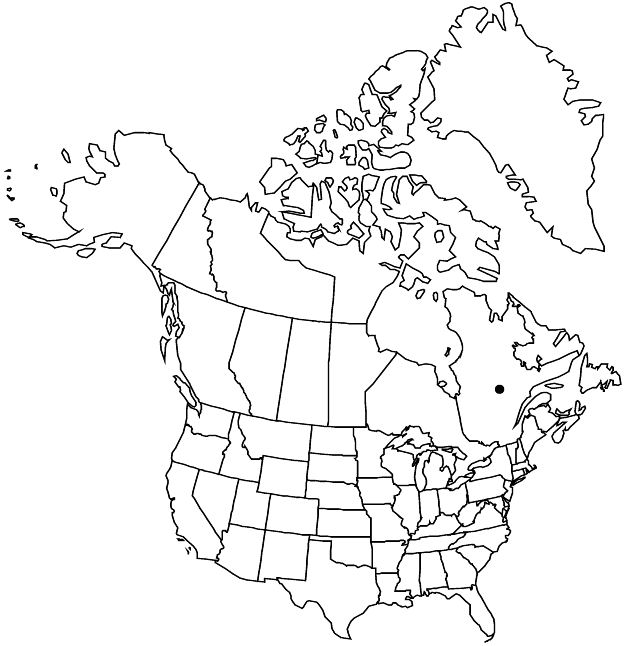Elatine ojibwayensis
Canad. J. Bot. 84: 1040, fig. 1e,f. 2006.
Herbs, submersed, 1–2 cm. Stems decumbent to erect, highly branched. Leaves green; stipules lanceolate, 1 mm, margins dentate, apex acute; petiole 1–3 mm; blade oblong, 1.2–5 × 0.3–2 mm, base cuneate, apex acute to obtuse. Pedicels 0.1–23 mm, erect. Flowers: sepals 4, equal, elliptic, 0.9–1.3 × 0.5–0.6 mm; petals 4, pale purple, elliptic, 0.8–1 × 0.5 mm; stamens 8; styles 2. Capsules depressed-ovoid, 4-locular, 1–1.1 mm diam. Seeds 3 per locule, oblong to ellipsoid, straight or curved to 15°, 0.7–1 × 0.2–0.3 mm; pits rectangular, length 1–3 times width, in 12 rows, 27–37 per row.
Phenology: Flowering summer.
Habitat: Riverbanks.
Elevation: 0–100 m.
Discussion
Morphologically, Elatine ojibwayensis is very similar to E. macropoda Gussone of Europe and North Africa. Morphological and molecular examination of the holotype as well as the other specimens cited in the original description showed that three characters in M. Garneau's description need to be modified. Thus our description for this species differs from Garneau's observations of number of stamens ("4"), pedicel length ("0.5-0.7 mm"), and number of seed pits per row ("30–37"). It is noteworthy that Garneau inadvertently included a specimen of E. americana (J. Deshaye 91–1422, QUE) in her new species description.
Elatine ojibwayensis is known from the Hudson’s Bay area near Rupert Bay and the Grande Rivière de la Baleine. It and E. californica are the only members of the genus with tetramerous flowers in the flora area.
Selected References
None.
